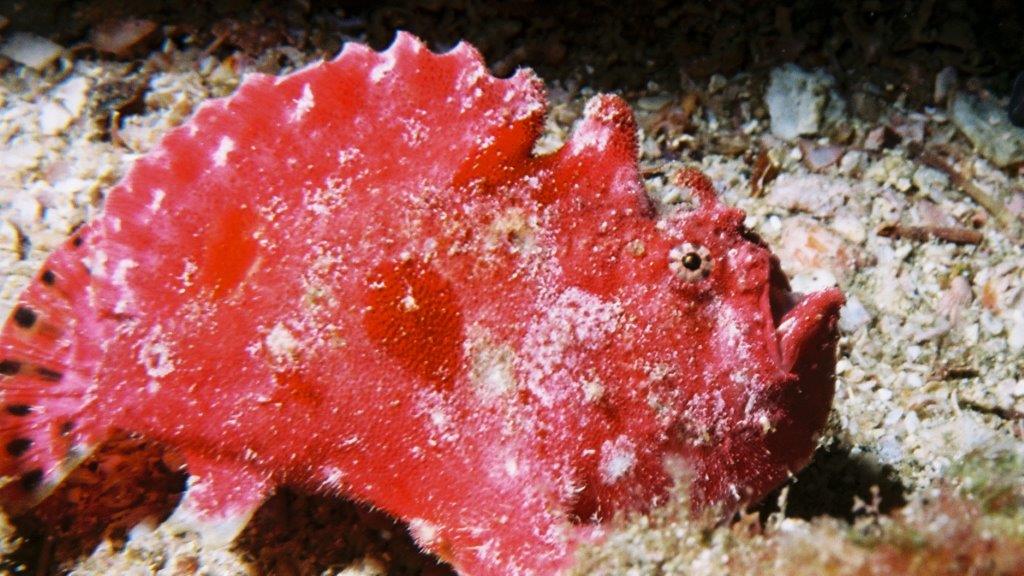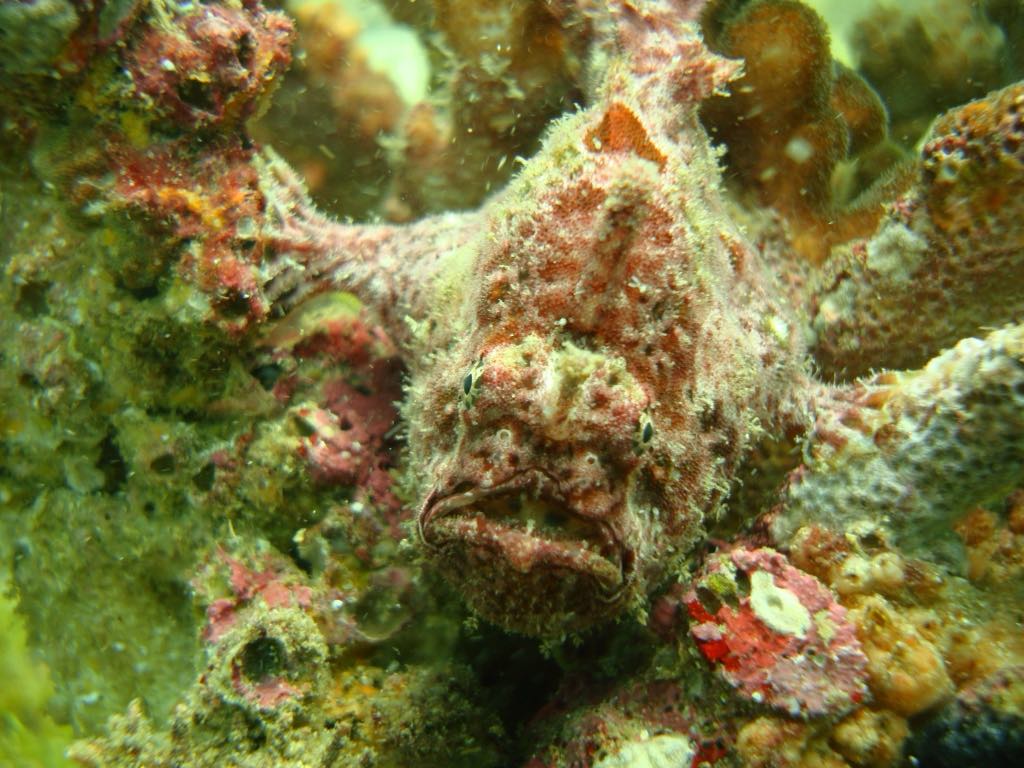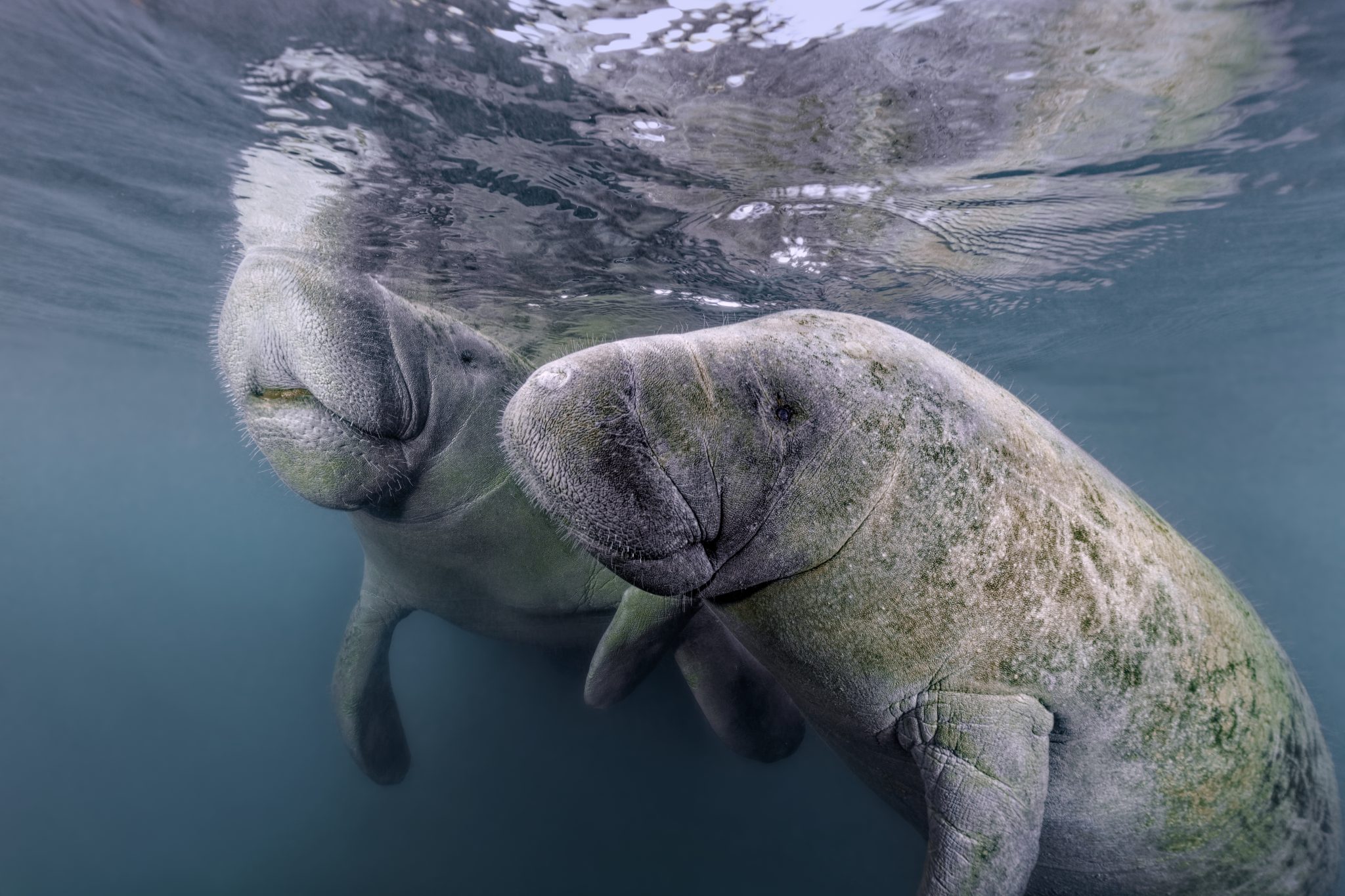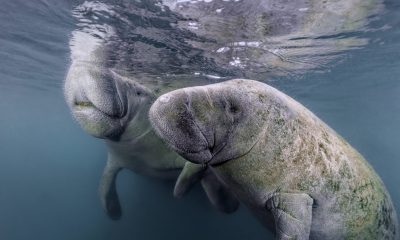Blogs
Diving with Frogfish in Costa Rica: A Hidden Gem Underwater

In the vast and vibrant underwater world of Costa Rica, there’s a peculiar creature that often goes unnoticed but holds a special place in the hearts of divers: the frogfish. This enigmatic and somewhat odd-looking species is a master of camouflage and a marvel of marine life. Diving with frogfish in Costa Rica is not just a dive; it’s an adventurous treasure hunt that rewards the patient and observant with unforgettable encounters. Let’s dive into the world of frogfish and discover what makes these creatures so fascinating and where you can find them in Costa Rica.
The Mystique of Frogfish
Frogfish belong to the family Antennariidae, a group of marine fish known for their incredible ability to blend into their surroundings. They can be found in a variety of colors, including yellow, pink, red, green, black, and white, and they often have unique spots and textures that mimic the coral and sponges around them. This camouflage isn’t just for show; it’s a critical survival tactic that helps them ambush prey and avoid predators.
One of the most remarkable features of the frogfish is its modified dorsal fin, which has evolved into a luring appendage called an esca. The frogfish uses this esca to mimic prey, such as small fish or crustaceans, enticing unsuspecting victims close enough to be engulfed by its surprisingly large mouth in a fraction of a second. This method of hunting is a fascinating spectacle that few divers forget once witnessed.
Where to Find Frogfish in Costa Rica
Costa Rica’s Pacific coast is dotted with dive sites that offer the chance to encounter these intriguing creatures. Bat Islands (Islas Murciélagos), Catalina Islands (Islas Catalinas), and the area around the Gulf of Papagayo are renowned for their rich marine life, including frogfish. These sites vary in depth and conditions, catering to both novice and experienced divers.
The key to spotting frogfish is to dive with a knowledgeable guide who can point out these master camouflagers hiding in plain sight. They’re often found perched on rocky outcroppings, nestled within coral, or even hiding among debris, perfectly mimicking their surroundings.

Diving Tips for Spotting Frogfish
Go Slow: The secret to spotting frogfish is to move slowly and scan carefully. Their camouflage is so effective that they can be right in front of you without being noticed.
Look for Details: Pay attention to the small details. A slightly different texture or an out-of-place color can be the clue you need.
Dive with Local Experts: Local dive guides have an eagle eye for spotting wildlife, including frogfish. Their expertise can significantly increase your chances of an encounter.
Practice Buoyancy Control: Good buoyancy control is essential not just for safety and coral preservation but also for getting a closer look without disturbing these delicate creatures.
Be Patient: Patience is key. Frogfish aren’t known for their speed, and sometimes staying in one spot and observing can yield the best sightings.
Conservation and Respect
While the excitement of spotting a frogfish can be thrilling, it’s crucial to approach all marine life with respect and care. Maintain a safe distance, resist the urge to touch or provoke, and take only photos, leaving behind nothing but bubbles. Remember, the health of the reef and its inhabitants ensures future divers can enjoy these incredible encounters as much as you do.
Join the Adventure
Diving with frogfish in Costa Rica is just one of the many underwater adventures that await in this biodiverse paradise. Whether you’re a seasoned diver or taking your first plunge, the waters here offer an unparalleled experience filled with wonders at every turn. Beyond the thrill of the hunt for frogfish, you’ll be treated to a world teeming with incredible marine life, majestic rays, playful dolphins, and so much more.
So, gear up, dive in, and let the mysteries of Costa Rica’s underwater realm unfold before your eyes. With every dive, you’re not just exploring the ocean; you’re embarking on an adventure that highlights the beauty, complexity, and fragility of our marine ecosystems. And who knows? Your next dive might just be the one where you come face-to-face with the elusive and captivating frogfish. Join us at Rocket Frog Divers for the dive of a lifetime, where the marvels of the ocean are waiting to be discovered.
About the Author: Jonathan Rowe
Are you looking to make a splash online? As a seasoned diver and digital marketer, I specialize in crafting bespoke websites and innovative marketing strategies for dive shops worldwide. With my expertise, your business will not only be seen but also remembered.
From deep-sea to digital depths, I navigate the complex waters of web development and online marketing, ensuring your dive shop stands out in the vast ocean of the internet. Contact Scuba Dive Marketing for more information.
Blogs
Heading out on the water this Summer? Watch for manatees

As National Safe Boating Week approaches, Save the Manatee® Club is urging boaters, and anyone that enjoys Florida’s waterways, to respect and protect the defenseless manatees that inhabit our shared waterways. From May 18 to 24, leading up to Memorial Day Weekend, the campaign aims to raise awareness about recreational boating safety and the importance of safeguarding imperiled manatees during the summer boating season. This week also emphasizes the importance of encouraging boaters to enroll in a boating safety course.
Manatees are semi-migratory marine mammals that are commonly found in shallow estuaries, bays, rivers, canals, and coastal areas throughout Florida and neighboring states. With some manatees venturing as far west as Texas and as far north as Massachusetts, collisions between these gentle giants and watercraft have become distressingly frequent. Boat propellers and high-speed collisions pose significant threats to manatees, often resulting in severe injuries or even death.
Save the Manatee Club is calling on all water enthusiasts to follow essential manatee safety tips to ensure the well-being of the imperiled manatee:
- Obey Speed Zone Signs: Familiarize yourself with and adhere to posted speed limits to prevent collisions with manatees.
- Reduce Glare with Polarized Sunglasses: Wear polarized sunglasses to enhance visibility and spot manatees below the water’s surface.
- Recognize Manatee Signs: Learn to identify signs of manatees in the area, such as swirls or flat spots on the water caused by their movements.
- Respect Manatee Sanctuaries: Keep a safe distance from posted manatee sanctuaries and avoid pursuing or harassing these marine mammals, as it is illegal and can disrupt their natural behaviors.
- Report Distressed Manatees: In Florida, promptly report distressed, injured, tagged, or orphaned manatees to the Florida Fish and Wildlife Conservation Commission (FWC) at 1-888-404-FWCC (3922). Outside of Florida, report sightings to the appropriate state agency or rescue organization. A list of agencies to contact is available at savethemanatee.org/report.
- Protect Seagrass Beds: Avoid boating over seagrass beds and shallow areas where manatees may be feeding. Stick to deep water channels while remaining vigilant, as manatees also utilize these channels during their travels.
- Dispose of Fishing Line Responsibly: Anglers should properly dispose of or recycle used fishing line to prevent entanglement hazards for manatees.
“Each year, National Safe Boating Week provides an excellent reminder for all of us to be aware that we share our waterways with vulnerable manatees,” emphasized Patrick Rose, Aquatic Biologist and Executive Director of Save the Manatee Club. “With the recent Unusual Mortality Event on Florida’s East Coast claiming an alarming number of manatees’ lives, it is more crucial than ever to prevent preventable deaths caused by watercraft collisions. By following manatee-safe boating guidelines, such as obeying speed zones and remaining vigilant for manatees, everyone on the water can contribute to the protection of these gentle giants.”
Save the Manatee Club offers a range of free materials to help safeguard manatees and raise awareness about manatee-safe boating practices. Shoreline property owners and park or marina managers can order aluminum dock signs to alert others about the presence of manatees in their areas. Boaters and paddlers can request packets containing a safety tips card, a waterproof boat banner, and a decal to display on their vessels, providing the number to report manatees in distress. To view and request these materials, visit savethemanatee.org/resources. Save the Manatee Club will also be hosting a live webinar for National Safe Boating Week on Tuesday, May 21st at 6pm EST. To register, visit savethemanatee.org/register.
Marine Life & Conservation Blogs
Book Review: Shells of the World

Shells of the World: A Natural History by M.G. Harasewych
Shells of the world is a guide to the world of marine, shelled molluscs. And what a varied and interesting world it is. Some of my favourite things to find on a dive are detailed in this book, including disco clams (or Electric File Clams as they are correctly names), the cephalopods, giant clams and sea hares. There are also many on my wish list, top of which is the Nautilus.
Each chapter provides a detailed description of the species, along with beautiful images. You can dive deeper and discover where they live, both with global distribution and the habitat they prefer. Learn about their diet, reproduction and diversity.
Having dipped in and out of this lovely book over the past few weeks, it has inspired me to learn more about this group of animals that we see on most divers, wherever we are in the world. Some of the shells are incredibly intricate and beautiful. I have always agreed with never collecting, or touching, marine life. The description of a certain set of cone shells should be a warning to those that are happy to pick up marine life! One of the cone shells has a local name called the cigarette snail. Why? Because once the venom is in your system from this animal, you only have time to smoke one cigarette before the affects of the venom are fatal!
What the publisher says:
Mollusks are invertebrate animals with a remarkable natural history and a rich fossil record, and their shells are prized for their breathtaking variety and exquisite beauty. Shells of the World provides a wide-ranging look at the incredible diversity of marine mollusks. An informative introduction outlines the lineages covered, followed by a directory section, split into classes, that profiles a broad selection of different taxa to give a sense of their sheer numbers and variety.
- Features hundreds of beautiful color photos, depicting both the live animals and their shells
- Discusses mollusk evolution, anatomy, life cycles, behavior, and ecology
- Describes unique characteristics, distribution, habitat, and size
- Provides valuable insights into the conservation of the world’s marine mollusks
- Ideal for malacologists and shell collectors everywhere
About the Author:
M. G. Harasewych is research zoologist emeritus and former curator in the Department of Invertebrate Zoology at the Smithsonian Institution’s National Museum of Natural History. A fellow of the American Association for the Advancement of Science, he is the author (with Fabio Moretzsohn) of The Book of Shells: A Life-Size Guide to Identifying and Classifying Six Hundred Seashells.
Book Details
Publisher: Princeton University Press
Hardcover
Price: £25
ISBN: 9780691248271
Published: 9th April, 2024
-

 Marine Life & Conservation Blogs3 months ago
Marine Life & Conservation Blogs3 months agoCreature Feature: Swell Sharks
-

 Gear Reviews4 weeks ago
Gear Reviews4 weeks agoGEAR REVIEW – Revolutionising Diving Comfort: The Sharkskin T2 Chillproof Suit
-

 Blogs2 months ago
Blogs2 months agoMurex Resorts: Passport to Paradise!
-

 Blogs3 months ago
Blogs3 months agoDiver Discovering Whale Skeletons Beneath Ice Judged World’s Best Underwater Photograph
-

 News3 months ago
News3 months agoPADI Teams Up with Wellness Brand Neuro to Drive Ocean Change and Create a Blue State of Mind
-

 Gear Reviews3 months ago
Gear Reviews3 months agoGear Review: Oceanic+ Dive Housing for iPhone
-

 Marine Life & Conservation2 months ago
Marine Life & Conservation2 months agoSave the Manatee Club launches brand new webcams at Silver Springs State Park, Florida
-

 Blogs2 months ago
Blogs2 months agoSeagrass Awareness Month brings critical food source for Manatees to centre stage


















